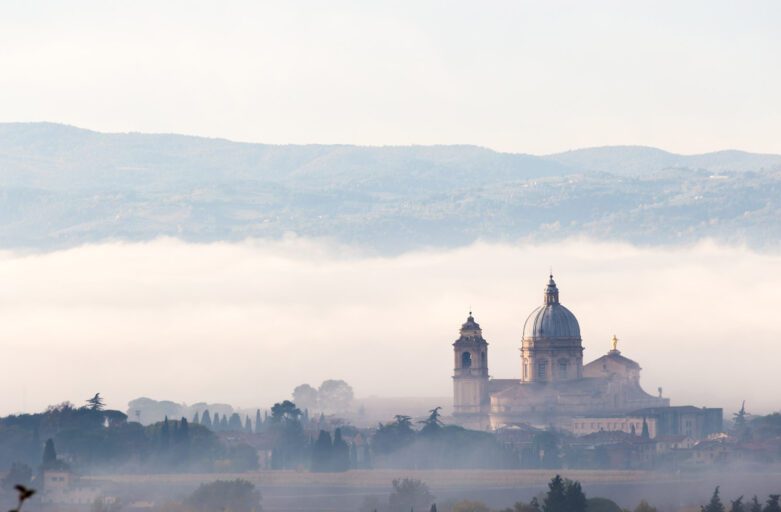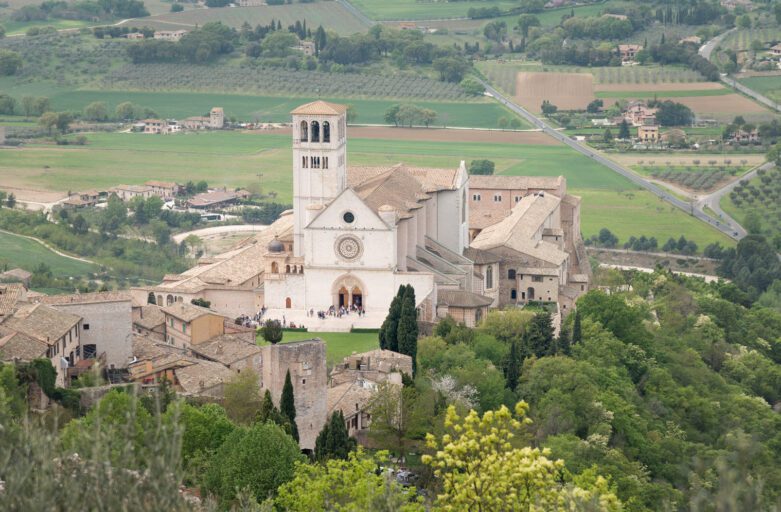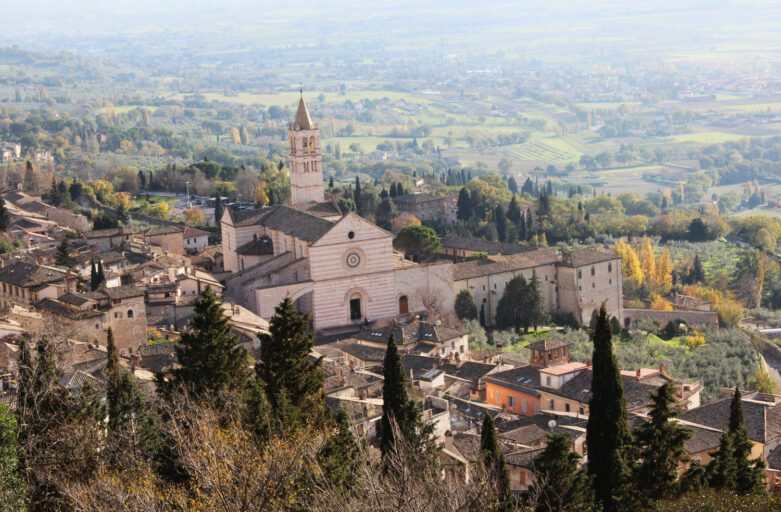Saint Francis of Assisi and the Porziuncola
The expanses below Assisi are among the most fascinating in Italy thanks to their colors and the view they afford on the town, which follows the contours of Mount Subasio in its white and rose stones. Precisely in this plain did blossom the life flowers of Saint Francis and Saint Clare. The young man, after restoring the Church of Saint Damian, “moved to the place called Porziuncola, where an old church existed, dedicated to the Blessed Virgin, Mother of God, now abandoned and forgotten. Seeing it in such a poor state, and also because he had great devotion toward the Mother of all goodness, the Saint made it his own home, and would finish to repair it in the third year after his conversion.” This is how Thomas of Celano, Francis’ first biographer, reports the Saint’s coming to this “small portion of land” (that is the meaning of Porziuncola) in the plain.
Right around that abandoned little church, possibly built in the fourth century and now given the Saint by the Benedictine monks, the first Franciscan company was founded, a bunch of enthusiastic friends. According to G. K. Chesterton, this became “the home of many homeless men.”


